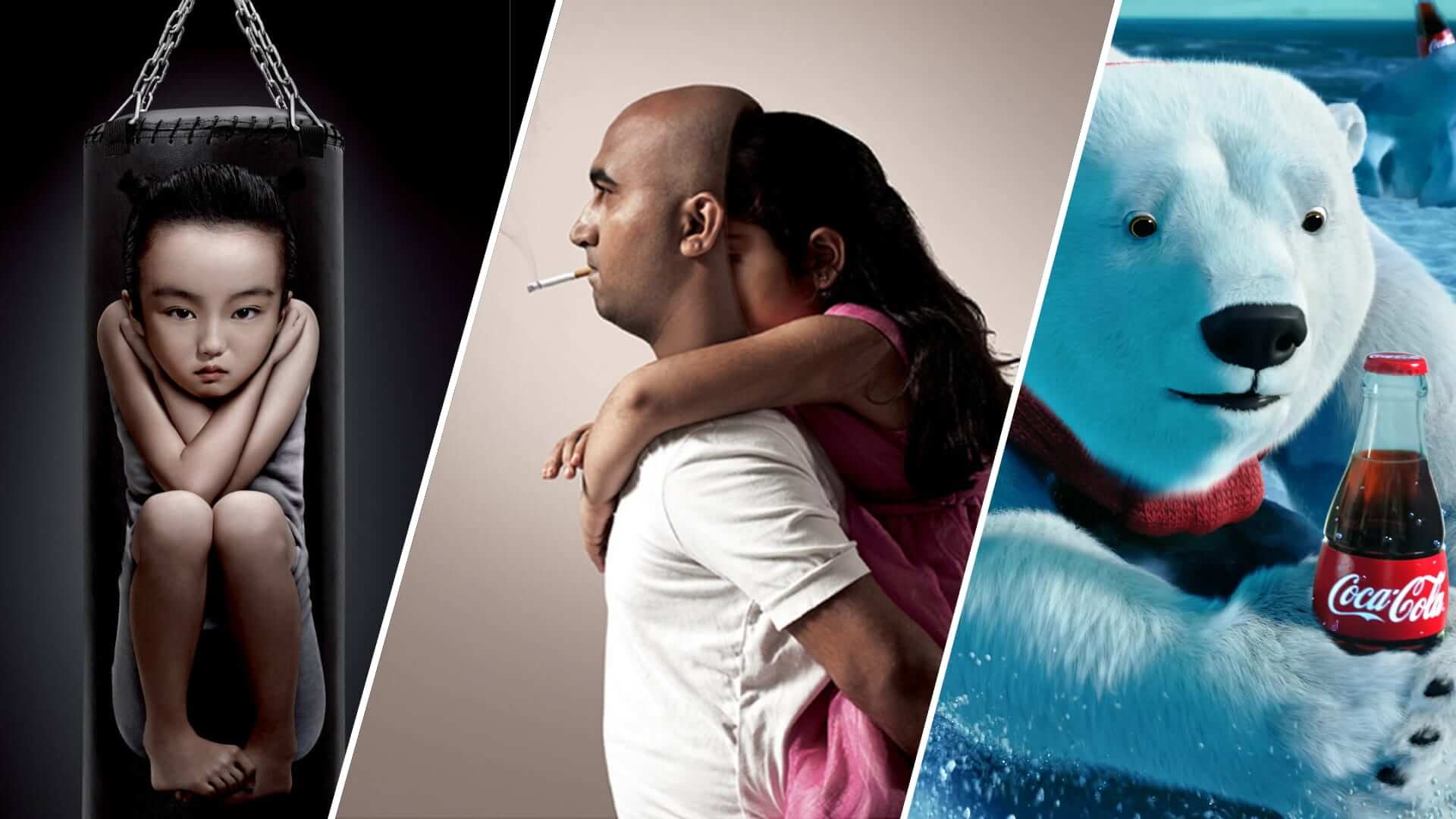Pathos In Ads: How Emotions Persuade & Examples!
Do advertisements truly hold the power to manipulate our feelings and sway our decisions? The undeniable truth is that the art of persuasion, particularly through emotional appeals, is a cornerstone of modern marketing, with 'pathos' at its very heart.
Consider the countless commercials we encounter daily, each vying for our attention, our loyalty, and ultimately, our wallets. Many of these messages are meticulously crafted to tap into our deepest emotions, crafting narratives that resonate with our hopes, fears, and aspirations. From the heartwarming tales of families connecting over a shared toy, like Toys R' Uss successful campaign that tapped into parents' desire to share Star Wars with their kids, to the tear-jerking scenes of charitable organizations seeking to alleviate suffering, these advertisements employ a potent blend of storytelling, imagery, and sound to create a visceral connection with the viewer.
To delve further into the strategies employed by advertisers to connect with audiences, consider the following table, providing a concise overview:
- From Factory To Fame Chad Gray Mudvaynes Rise To Metal Glory
- Activision Account Issues What To Do When You See These Messages
| Aspect | Details |
|---|---|
| Definition of Pathos | Pathos, in rhetoric, is an appeal to the audience's emotions. It's a persuasive technique used to evoke feelings, like joy, sadness, anger, or fear, to influence the audience's response. |
| Common Emotions Targeted | Advertisers frequently target emotions such as:
|
| Examples in Advertising |
|
| Techniques Used | Advertisers employ various techniques, including:
|
| Relationship to Other Rhetorical Appeals | Pathos often works in conjunction with:
|
| Ethical Considerations | The use of pathos raises ethical questions about manipulation and responsible advertising. It's crucial to consider:
|
| Relevance in different media | Pathos is used in:
|
For more in-depth information about Pathos and its applications in advertising, please visit the following website: Example Website (Note: Replace with a real, relevant website link).
The emotional appeals within advertising are diverse and carefully chosen. Brands understand the power of connecting with their audience on a human level, and they leverage this knowledge to influence consumer behavior. Consider the range of feelings they might target. Some ads feature cute babies. Others focus on the journey of a child growing to understand and love their father. Some use humor to form a positive connection, a technique employed to great effect in the iconic Old Spice commercials, which made the brand memorable and well-liked.
The Ad Council, established in 1942, has a long history of crafting memorable campaigns that resonate with the public. Their success underscores the lasting impact of well-executed advertising that connects with core human emotions. Nikes "Dream Crazy" commercial serves as a prime example, illustrating how advertisers employ various approaches to engage the audience emotionally. The advertisement is a tapestry of feelings woven to motivate action and inspire viewers.
- Tom Bradys Dating Life Exploring His Relationships Rumors
- Dumbest Animals On Earth Top 20 Why Theyre Hilarious
Its important to note that pathos isnt confined to sadness or despair. Elation, joy, and humor also find their place. When a brand aims to create a sense of celebration, Aristotle's principles of emotional persuasion are often the starting point. This framework provides a strong foundation for making advertising memorable and energizing. One can use pathos effectively within an advertising campaign. The key is the understanding of which emotions to use and when to do so to create an impactful message.
The emotional appeal is not just in advertising. It is frequently used in literature, politics, and other forms of communication. Literature provides endless examples of pathos in action. It can be a device that authors use to create a deeper connection with their audience. In the well-known 'First Shave, The story of Samson', Gillettes ad is a very good example of Pathos used effectively.
Many of us are familiar with the ASPCA commercials. These ads, often featuring images of suffering animals paired with moving music, tap into our empathy, compelling us to take action. The emotional impact is undeniable, and it's a clear example of how pathos can be harnessed to drive engagement and support for a cause. In contrast, an advertisement for a charity might incorporate images of starving children and highlight their desperate living conditions to evoke sympathy and compassion.
In the realm of persuasion, we encounter three key strategies: Ethos, Logos, and Pathos. Ethos establishes credibility, logos uses logic and reason, while pathos appeals directly to our emotions. The goal is to persuade the audience to embrace the speaker's message. Authors use deliberate word choices, imagery, and storytelling techniques to create an emotional connection with their readers. They may select language designed to evoke feelings like joy, pride, anger, or sadness, ultimately influencing the audience's perception and response. Pathos, as an emotional plea, is a core strategy that motivates audiences to act.
The world of advertising is a blend of art and science. Marketers meticulously analyze their target audiences, and they work to find out the specific emotions that will resonate with them. A brand campaign often includes different strategies. A celebrity, used for ethos. A touching story to spark a feeling (pathos). Bullet points listing the product's benefits (logos).
Advertising campaigns frequently use the rhetorical triangle. The combination of ethos, pathos, and logos gives marketers the tools they need to deliver the message that will convince their target audience. The most effective advertising campaigns are the ones that use the emotional appeal along with a solid understanding of brand awareness.
For example, the heartwarming narratives that depict family dynamics or personal transformations within ads. Often, these narratives are combined with humor, creating a balance that increases memorability. This strategic mix enhances brand recall.
Advertisers work very hard to ensure that audiences remember their brands, and it is the emotional connection that creates that memorability.
Advertisers know the emotional appeals of their audiences. That knowledge is at the center of all effective advertising. Every ad campaigns effectiveness depends on the successful use of all three techniques, creating a comprehensive message that appeals to logic and emotions alike.
Pathos in advertising is not limited to ads that focus on sadness or suffering. Advertisers also use hope, joy, and humor. The goal is to create a connection that makes the audience feel involved. By making you laugh, an ad creates a positive connection. This positive connection is the basis of brand recognition and customer loyalty.
In contrast, ads designed to elicit feelings of fear or anxiety must be handled with care. The goal is to motivate the viewer. Advertisers also seek to create a strong call to action, persuading people to act on the message by donating or supporting a cause. Understanding when to avoid specific emotional approaches can be as crucial as knowing how to use them.
The use of pathos in advertising is a complex and nuanced practice. By carefully selecting the right emotional tone and message, advertisers can create compelling campaigns. It is the emotional element that connects audiences to the brand.
So, the next time you find yourself moved by an advertisement, take a moment to appreciate the masterful use of pathos at work. It is a powerful tool for shaping our perceptions and influencing our decisions. The power of emotions in advertising is undeniable. Understanding how these appeals function is crucial for anyone involved in marketing, communication, or even simply navigating the media landscape.
- Neymar Stats Career Latest News Everything You Need
- Ellie Smiths Net Worth How Rich Is The Pop Singer

Free Your Thoughts Ethos, Logos & Pathos

Emotional Appeal Propaganda Project 2a

Free Your Thoughts Ethos, Logos & Pathos